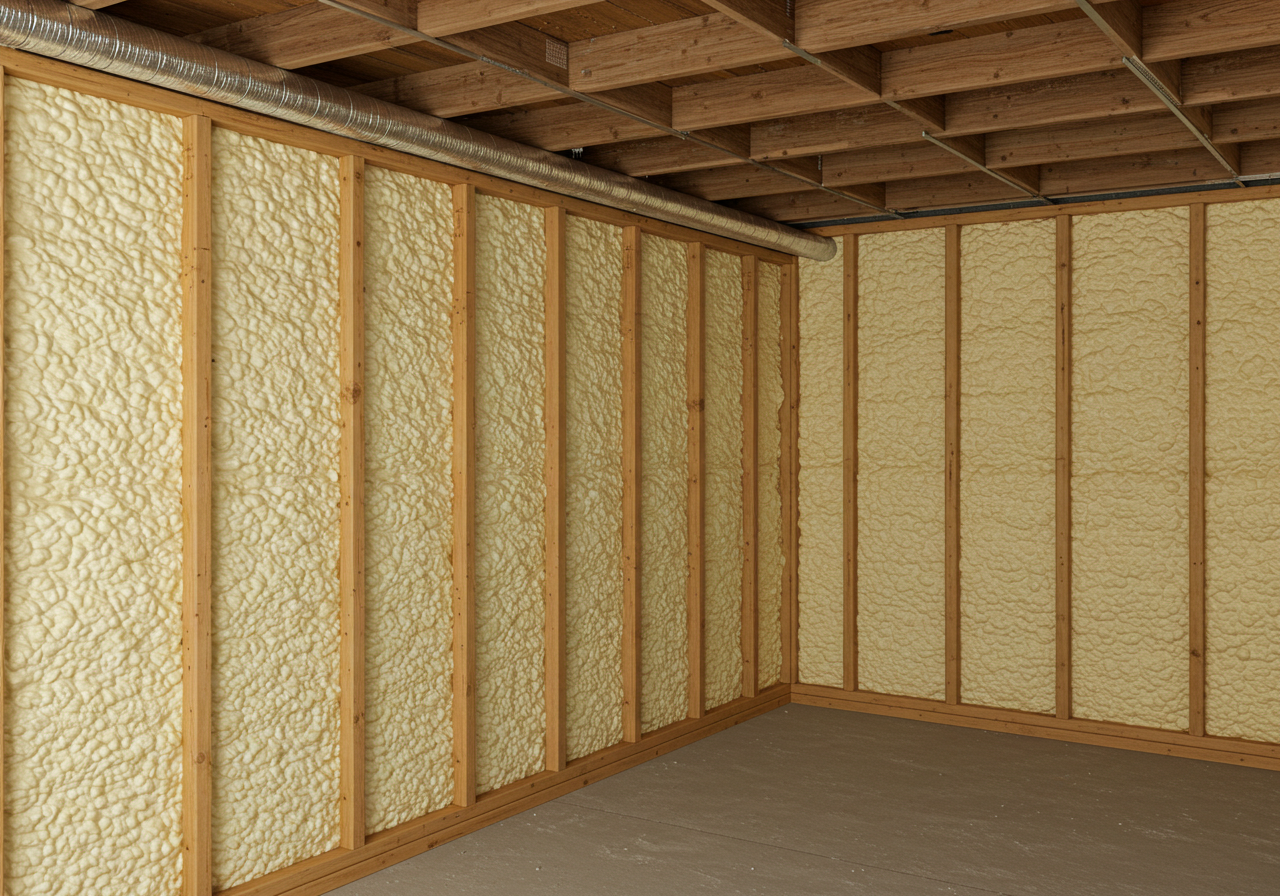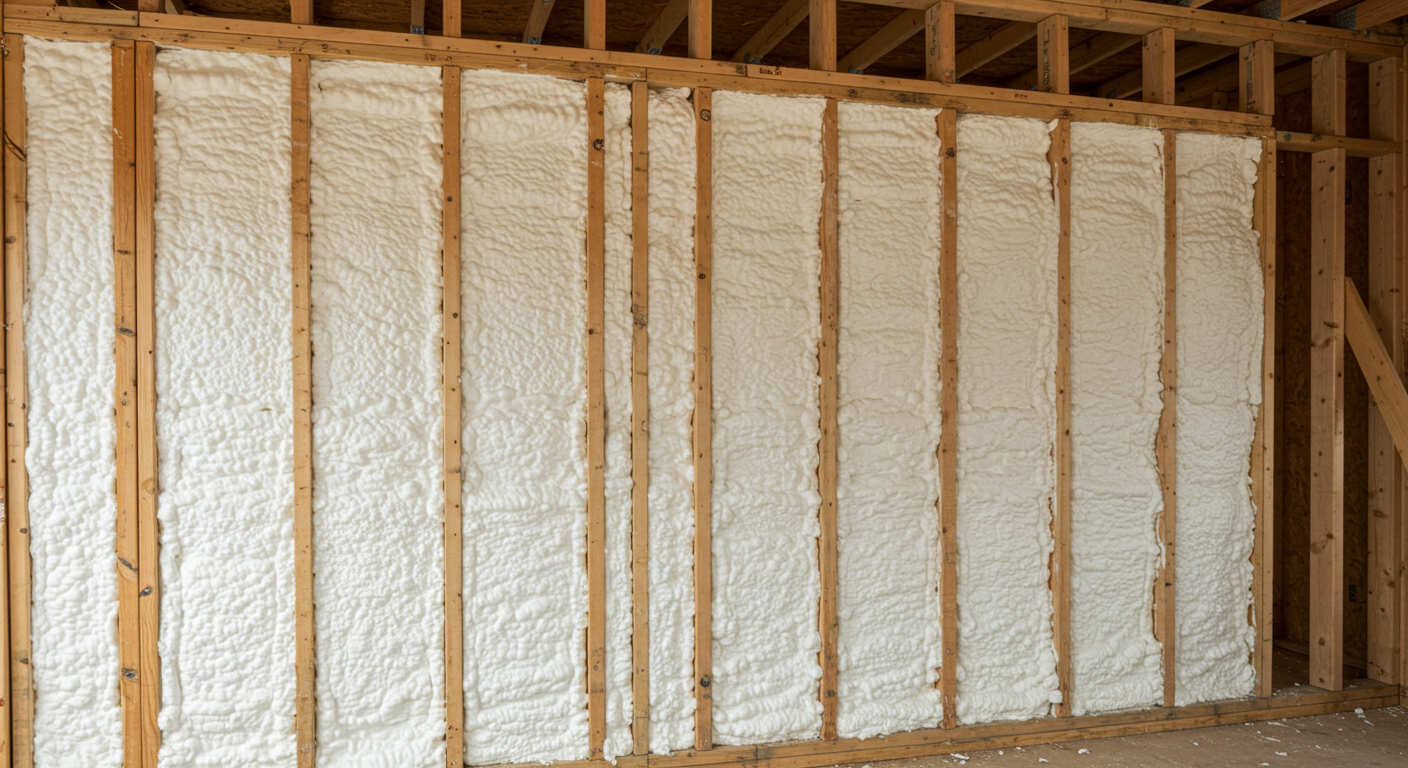
Spray foam insulation helps reduce indoor allergens by sealing gaps, cracks, and crevices where dust, pollen, mold spores, and outdoor contaminants typically enter a home. In Brookport, IL, where seasonal shifts and humidity can aggravate indoor air quality, closed-cell spray foam offers a reliable air barrier that limits allergen intrusion and moisture buildup.
This insulation method minimizes airflow between conditioned and unconditioned spaces, reducing the circulation of airborne irritants such as fiberglass particles, pest dander, and mold—a frequent concern in crawl spaces and older walls. Spray foam also discourages mold formation by preventing condensation within wall cavities.
Information provided here is based on field-tested experience installing residential and commercial insulation across Massac County. Installers routinely observe improved air quality and fewer allergen-related complaints following closed-cell foam applications in attics, basements, and crawl spaces.
Spray foam works as both insulation and an air sealant. Traditional materials like fiberglass batts or blown-in cellulose cannot match its ability to block uncontrolled air infiltration. In homes around Brookport, this is especially important during high-pollen seasons and periods of elevated humidity.
Key benefits:
| Insulation Type | Air Sealing Capability | Mold Resistance | Dust Containment | Allergen Entry Barrier |
|---|---|---|---|---|
| Closed-Cell Spray Foam | High | High | High | Excellent |
| Open-Cell Spray Foam | Medium | Moderate | Medium | Good |
| Fiberglass Batt | Low | Low | Low | Poor |
| Blown-In Cellulose | Low | Moderate | Low | Poor |
| Mineral Wool | Low | High | Medium | Fair |
| Property | Closed-Cell Spray Foam | Open-Cell Spray Foam | Fiberglass Batt | Mineral Wool |
|---|---|---|---|---|
| R-Value per Inch | 6.0 – 7.0 | 3.5 – 3.7 | 2.9 – 3.8 | 3.0 – 3.3 |
| Air Permeability | < 0.02 L/s/m^2 | 0.1 – 0.2 L/s/m^2 | > 1.0 L/s/m^2 | 0.3 – 0.4 |
| Water Absorption Rate | < 1% | 5% – 10% | 30%+ | ~1% |
| Mold Growth Resistance (ASTM C1338) | Pass | Partial | Fail | Pass |
Brookport faces high pollen counts during spring and summer, as well as significant humidity throughout the year. Homes often struggle with moisture accumulation in crawl spaces and basements. Spray foam, particularly closed-cell, provides effective vapor control and seals the air leaks common in older Midwest construction.
Bonus Tip: For crawl spaces in Brookport, always opt for closed-cell spray foam to both insulate and moisture-seal the space. This reduces mold risks and air migration into upper living areas.

Bonus Tip: Always schedule insulation removal when switching from outdated materials. Residual particles and allergens can remain if old insulation is left in place.
Armored Insulation offers insulation solutions that directly impact indoor air cleanliness:
Not typically. Once cured, spray foam is inert. Proper ventilation during installation eliminates any off-gassing risk.
Yes. Injection foam versions can be applied through small drilled holes, reducing disruption.
Most homeowners report noticeable differences within days, especially if previous insulation was moldy or loose.
Yes, especially if the existing material is contaminated, damp, or improperly installed.
Need reliable insulation to improve indoor air quality in Brookport, IL? Armored Insulation provides spray foam and crawl space solutions backed by practical installation knowledge. Reach out today:
Phone: (270) 331-4844 Email: [email protected]
Closed-cell spray foam, due to its superior air sealing and mold resistance.
Yes. By sealing cracks and cavities, it prevents air transfer that often carries musty or outdoor odors.
Yes. It reduces air leaks and HVAC load, leading to lower heating and cooling costs.
When properly installed, it can last over 30 years with minimal degradation.
Yes, especially closed-cell variants, which also provide vapor control and structural support.